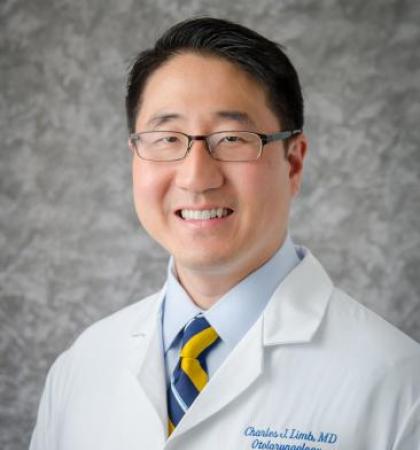Sound and Music Perception Lab
Charles Limb
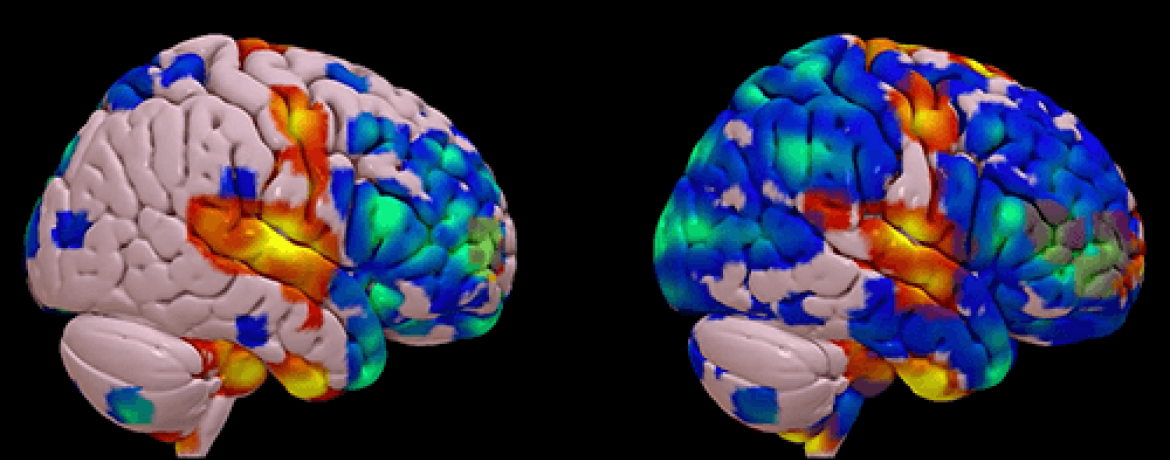
The Sound and Music Perception Lab at UCSF is devoted to exploring music perception and complex sound processing in cochlear implant users as well as the neural substrates of musical creativity. Since its establishment, the lab’s research has been generously supported by grants and gifts from a range of funders including but not limited to the National Institutes of Health, the Johns Hopkins University Brain Science Institute, the Dana Foundation, the Med-El Corporation, the Advanced Bionics Corporation. We are currently funded by the National Endowment for the Arts (NEA) as one of their Research Labs. Our project studies the neural correlates of improvisation across art forms and links between creativity and cognition.
Current Research
Cochlear implants (CIs) are surgically implanted hearing aids for people with severe-to-profound sensorineural hearing loss. CIs have drastically improved speech perception for hearing loss patients; however, music perception remains difficult. Our lab’s research aims to generate a more comprehensive understanding of the limitations of music and sound in CI users and to develop ways to mitigate these limitations through surgical, technological, and auditory training techniques. Some of our current projects include:
- Assessment of pitch, music, and speech emotion perception in CI users
- Development of personalized place-pitch maps for CI users
- Development of personalized auditory/musical training programs for improvement of music and sound perception
The Limb Lab’s research in creativity seeks to understand the neural substrates of creativity, both musical and non-musical. Creativity is an extremely complex human capacity and little is understood about its underlying neurological processes. Our lab uses creative activities such as musical jazz improvisation, cartoon sketching, and free-style rapping in combination with functional MRI and EEG to study the creative process in real time. Among other projects, the lab is currently developing a paradigm to study the neural underpinnings of musical improvisation in children and adolescents.
Learn more about Dr. Limb's research featured on CNN about functional MRI and jazz.
Research Involvement and Opportunities
Studies in the Limb Lab involve a wide range of participants including hearing loss patients, CI recipients, musicians, non-musicians, artists, children, and healthy-hearing listeners. If you are interested in research participation opportunities, please contact Charles Limb.
You may volunteer if:
- You are 7+ years old
- You are a cochlear implant user or you have normal hearing
What is involved?
- You will be asked to complete a memory task, and music perception and complex sound tasks where you will listen to certain music or sounds and be asked for feedback
- These tasks will take 1-4 hours and can usually be completed in one visit.
Benefits:
- Parking expenses will be reimbursed if applicable
- You will be compensated $15/hour, with a maximum of $75
- You will be helping research about music perception in cochlear implants, which could benefit many people in the future
For more information or to participate in this study, please contact: Brooke Barry, B.S.,B.A, 562.489.6222, [email protected]
This study has been reviewed by, and received approval from, the UCSF Institutional Review Board. Principal Investigator: Charles J. Limb, MD
You may volunteer if:
- You are 18+
- You are a cochlear implant user or you have normal hearing
What is involved?
- Volunteers will be asked to extract their listening data from Spotify and then fill out two quick surveys.
- These tasks will take about 30 minutes to complete.
- All study activities can be completed remotely.
Benefits:
- You will be helping research about music perception in cochlear implants, which could benefit many people in the future
For more information or to participate in this study, please contact: Brooke Barry, B.S.,B.A, 562.489.6222, [email protected]
This study has been reviewed by, and received approval from, the UCSF Institutional Review Board. Principal Investigator: Charles J. Limb, MD
You may volunteer if:
- You are an adult planning to receive a MED-EL cochlear implant
What is involved?
- Receive a high resolution CT scan after your cochlear implant surgery
- Done at UCSF Parnassus, takes about 1 hour
- Have your cochlear implant activated with a personalized pitch map based on the CT scan (as opposed to the standard default pitch map)
- Attend 6 cochlear implant testing sessions over the next 13 months
- Each lasts 2-4 hours
- Preferably in person at UCSF (alternative locations to be discussed on case-by-case basis)
- Music and speech-related listening activities
Benefits:
- You will be paid $50 to have the CT scan and $15/hour for your participation in testing sessions
- Parking expenses will be covered, if applicable
You will be helping research about music perception in cochlear implants, which could benefit many people in the future.
For more information or to participate in this study, please contact: Melanie Gilbert, AuD, 415.353.4394, [email protected]
This study has been reviewed by, and received approval from, the UCSF Institutional Review Board. Principal Investigator: Charles J Limb, MD.
We seek to understand how culture influences music listening and rehabilitation of adult Asian American Pacific Islander (AAPI) cochlear implant users. We will conduct a Zoom interview for 45 minutes and discuss the cochlear implant user’s music listening frequency, preferences, and role of culture on music listening. As a small gesture, participants will be compensated a $10 gift card for their time.
If interested, please fill out a quick eligibility survey. Please reach out to Eric Kim at [email protected] with any questions or concerns. Thank you for your consideration.
NEA Research Lab
We are proud to announce that the UCSF Sound and Music Perception Lab is now a National Endowment of the Arts Research Lab. Our project funded by the NEA will be investigating the neural correlates of improvisation across art forms, studying world-class musicians, comedic improvisers, and visual artists. We are also examining links between creativity and cognition. Please see the links below for material related to this work with the National Endowment for the Arts.
Blog
We are delighted to announce that we have another renewal of our NEA Research Lab grant! We feel incredibly grateful for the support of our scientific investigation into the brains of artists. As mentioned in earlier blog posts, one portion of our NEA Research Lab project focuses on eminent musicians as case studies. While cohort studies of artists are vital and important to the field, by averaging data together we may be reducing or removing cortical variability. Because eminent musicians are “creativity outliers,” we have created case study experiments to 1) create experimental paradigms tailored to their unique talents and 2) observe what makes their minds unique. Below is a figure showing the amazing artists who have served as case study participants in our project. We thank them as well as their agents for helping to facilitate their participation in our experiment. Several manuscripts are under review and data analysis continues. Stay tuned!
We are thrilled to share that this summer marks the return of our summer students in person within our lab, a welcome sight after the challenges posed by the COVID-19 pandemic. Joining us are Harvard Medical School student Michelle Zhang, recent neuroscience and music graduate Brooke Barry, psychology student Paige Montgomery, and high schooler Akshaj Bozza. Our summer volunteers worked on various projects related to musical proficiency and cochlear implant users, music and aging, and our NEA Research Lab projects! It feels incredibly rewarding to see our workspace buzzing with fresh faces!



The APS (Association for Psychological Science) Annual Convention was held from May 23rd to May 26th, 2024 in San Francisco this spring. During this event, Dr. Karen Barrett presented her talk titled “Using Functional Magnetic Resonance Imaging (fMRI) to Study Creativity” focusing on her research on musical improvisation and its implications for understanding creativity in the brain. Dr. Barrett discussed her collaboration with comedic improvisers Sammy Wegent and Anthony Veneziale, and visual artists such as Meredith Tromble and Jose De Los Reyes as a NEA Research Lab. Her talk was part of a special panel at APS about NEA-funded work, and preceded Dr. Julene Johnson’s presentation about the Sound Health Nework. Photo below shows Dr. Barrett and Dr. Johnson after their talks!

The Society for the Neuroscience of Creativity’s (SfNC) 2023 annual meeting entitled “Creativity and Artificial Intelligence” took place on March 24, 2023 at UCSF’s Mission Bay campus. The mission of the SfNC is to foster research on neural and cognitive bases of creativity and related constructs and to provide a forum for communicating this research so that it has maximal impacts on education, health, innovation, and artistic performance. Dr. Karen Barrett was co-chair of the SfNC Organizing Committee and was the conference host. UCSF Sound and Music Perception Lab Member Vani Dewan presented a poster entitled “The neural correlates of Indian classical percussive improvisation: a case study investigation of eminent performer Zakir Hussain.” Approximately 80 participants attended the conference in person at UCSF, while another 100 participated online virtually by watching the conference Livestream.
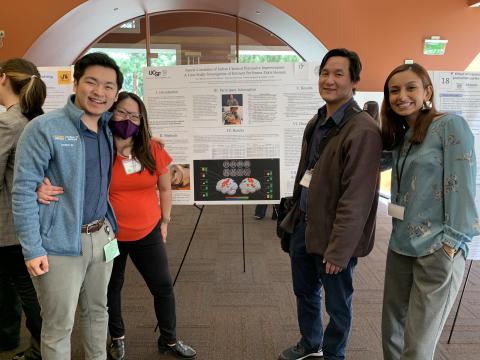
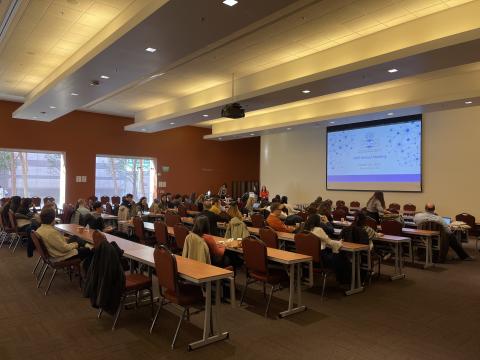
Since in-person testing was paused in 2020 due to the pandemic, we have changed our testing approach. Previously, participants arrived at Sandler Neurosciences Center at the UCSF Mission Bay campus to participate in an fMRI session followed by a suite of surveys, questionnaires, and quizzes completed using pencil and paper on the same day. Like many studies at UCSF during the pandemic, we migrated all testing that didn’t have to be done in person to a remote format. We explored which of our assessments could be completed online and which should remain on paper. Our test battery includes surveys of personality, artistic experience, and creativity assessments. We now schedule a zoom meeting to go through the informed consent process and administer the digital and paper questionnaires and surveys. We were able to conduct one fMRI session in the summer of 2021 during a brief covid window that allowed for in-person testing. We are grateful to our collaborators at the San Francisco Art Institute, Jose de los Reyes and Meredith Tromble for their help developing the methods to explore improvisation in visual artists. Though we look forward to additional fMRI testing, we are glad to be able to continue collecting data and streamlining our in-person sessions when they are safe to resume. In the meantime, we are continuing to analyze previously acquired fMRI imaging data, an ongoing process that will continue for the next several years.
We collaborated with Meredith Tromble and Jose de los Reyes at the San Francisco Art Institute to develop an fMRI paradigm for visual artists, the third cohort of artists in our study funded by the National Endowment for the Arts. Just like the comedian and musician groups, we will be comparing a rote activity (e.g. copying) to an improvisational activity (e.g. generating a sketch). With the help of Meredith and Jose who are experienced artists themselves, we developed materials that allow for participants to use MRI-safe drawing pencils and sketch in a booklet while lying on their backs in the scanner.

fMRI testing is currently on hold until Fall 2022 due to COVID restrictions, however, we are currently recruiting right-handed professional visual artists with no mental implants who are comfortable sketching with a pencil to participate in this study! Visual Artist participants can complete behavioral surveys and questionnaires via zoom now and complete fMRI testing later after the pandemic. Please contact [email protected] if you are interested in participating!
Dr. Barrett will be giving a talk about this NEA Project on November 17th, 2021 from 7-8 AM as part of the UCSF Orlo Clark Lecture on Wednesday November 17th from 7-8 AM PST (i.e. Department of Surgery Grand Rounds).
During the COVID-19 pandemic, members of the UCSF Sound and Music Perception lab have been working remotely, analyzing data, and working on manuscripts to disseminate information about our research. In May 2021, Dr. Barrett will be participating in two virtual events:
- On Thursday, May 13th, Dr. Barrett will be presenting a lecture entitled “The Neuroscience of Creativity” on how sound and music is processed from the ear to the brain, and how UCSF’s Sound and Music Perception lab has used neural imaging to study musical creativity and improvisation. This is the first lecture of the virtual course “Creative Expression for Mind- Body Health” part of the UCSF-sponsored “Osher Mini Medical School for the Public.” Course lectures will continue Thursday evenings, May 13th- June 17th, 6-7:30pm PT to explore how the arts, music, and the humanities have been used throughout history as a medium for healing and resilience. Register for the course here.
- On Saturday, May 15th, Dr. Barrett will be participating as presenter and a panelist in a symposium for the University of British Columbia (Vancouver, Canada) entitled “In Tune with Your Brain: Harmonizing Creative, Clinical and Community.” The symposium will dive into why and how music transcends cultures, boundaries, and populations. Check out the video below for more information. This half-day event is open to the public. Register for this free event here.
October 2020

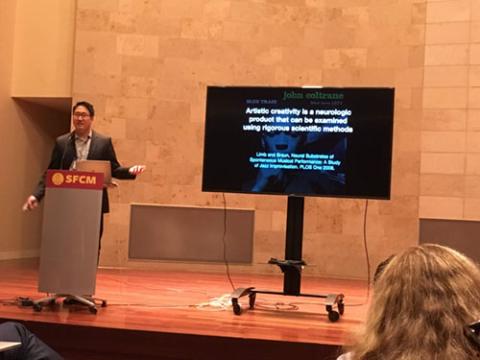
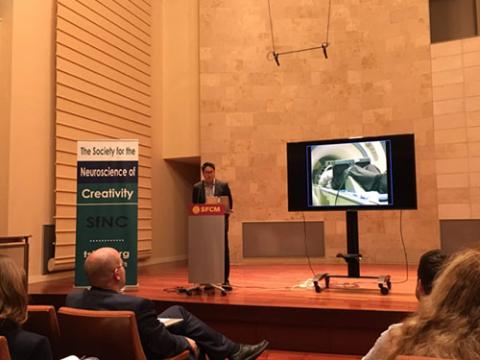
Last March 2019, we were excited to attend the Society for the Neuroscience of Creativity’s (SfNC) annual conference. The mission of SfNC is to foster research on neural and cognitive bases of creativity and to provide a forum for communicating this research. SfNC is a relatively new and critical organization that works to unify and grow the study of the neuroscience of creativity across the country. At the conference, Dr. Charles Limb gave a keynote speech and Dr. Barrett presented a poster on a project we affectionately call “Pianokids.”
Dr. Limb gave an overview of why it’s important to study creativity — creativity is closely linked to human survival and evolution. Dr. Limb emphasizes that “[while] creativity is magical, it’s not magic.” Creativity is a product of normal human brain activity, and therefore can and should be investigated using scientific research paradigms. In his keynote presentation, he presented past research as well as our research currently supported in part by the National Endowment for the Arts.
Dr. Barrett presented her “Pianokids” poster investigating the neural correlates of musical improvisation in elementary school aged children (9-11 years old) with no musical training. Using an innovative paradigm based on the pentatonic scale, participants improvised melodies or played a scale repeatedly while being scanned in an fMRI scanner, thereby allowing us to see the brain activity associated with the improvisation in contrast to a more “rote” musical activity.
The Society for the Neuroscience of Creativity has its virtual meeting coming up on October 22-23rd, 2020. Dr. Barrett will be presenting a poster talk on work supported by funding from the NEA at 1 PM on Friday October 23rd. To learn more about this academic society, become members of the society, or learn about the conference, check out their website: https://www.tsfnc.org/
May 2019
As part of our NEA keystone project, we are scanning internationally-renowned musicians as case studies. These eminent improvisers will complete both tasks tailored to their individual talents as well as a common improvisation task in order to be compared as a case series on how improvisation may manifest in outstanding artists. While much of the current creativity research focuses on group studies which average together the results of many subjects, there may be some merit in considering each artist as a unique data point. See our discussion of this in our recently published article from our lab.
We recently had the opportunity to test Fantastic Negrito, who just won his 2nd Grammy award, as one of our imminent musicians. Wired magazine filmed us to document the experience as we scanned Fantastic Negrito in the functional magnetic resonance imaging (fMRI) scanner at UCSF Mission Bay. Check it out in their latest tech video as well as see some of the other interesting music and neuroscience work being done in the field:
https://www.wired.com/story/tech-effects-how-does-music-affect-your-brain/
April 2019
We’ve been busy getting going with our NEA project.
How do we use the scientific method to study creativity? Our past experiments have primarily focused on musical improvisation. In one of our studies, trained jazz musicians would lie on their backs in the scanner so that their heads were within the fMRI scanner (Limb & Braun, 2008). They held a custom-built, non-ferromagnetic keyboard on their laps and played music with their right hand, being careful to hold the rest of their bodies still so that we could acquire clear brain images. Even in this atypical performance environment, we saw distinct differences in brain activity associated with improvisation in comparison to pre-practiced or pre-learned music. In another experiment, we investigated brain activity associated collaborative improvisation by having a jazz musician in the scanner alternating playing music with an experimenter in the control room, a jazz paradigm known as “trading fours” (Donnay et al., 2014).
Hear about these studies and some of our past work here in Charles Limb’s TED Talk:
https://www.ted.com/talks/charles_limb_your_brain_on_improv
December 2018
We are delighted that we have been selected as one of the National Endowment for the Arts (NEA) Research Labs this year for a project that will be investigating creativity and cognition. In previous experiments, our lab used functional magnetic resonance imaging (fMRI) to study what happens in the brain when jazz musicians improvise music. With the support of the NEA, we will now be using fMRI to study improvisation across different art forms. We will be scanning exemplary jazz musicians, visual artists, and comedians as they perform an improvisational task and a matched control task while lying in the fMRI scanner. Outside the fMRI scanner, participants will also be completing a battery of assessments including personality measures, tests of creativity, and tests of cognitive abilities. For this ambitious project, we are grateful to be collaborating with SFJazz, the San Francisco Art Institute, Second City Improvisation Troupe, and Speechless who will aid us in designing the experimental tasks and recruiting artists. We hope this project will help us better understand the neural correlates of improvisation across artistic domains and the biological underpinnings of creativity.

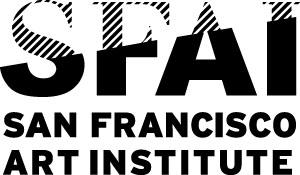


November 2018
The UCSF Sound and Music Perception Lab run by Dr. Charles Limb. Dr. Limb is an Ear Nose Throat Surgeon in the Department of Otolaryngology and head of the Douglas Grant Cochlear Implant Center here at the UCSF Medical Center. Currently our lab includes Karen Chan Barrett (a postdoctoral scholar), Melanie Gilbert (an audiologist), Patpong Jiradejvong (our lab engineer), and Nicole Jiam, Divya Chari, and Nina Zhao (ENT residents).
Our lab has two major research focuses. One area of research centers around music perception in cochlear implant users; cochlear implants are surgical devices that replace the damaged inner ear function in patients who have profound hearing loss. Cochlear Implants (CIs) are amazing at allowing patients to comprehend speech, but music is still hard to perceive.
Our other research area focuses on the neuroscience of creativity. Specifically, what happens in the brain when we are performing musical improvisation—the creation of music ‘on the spot’? And how is this different from when we’re playing pre-learned, memorized music?
We just received a 2-year grant from the National Endowment for the Arts to study the neuroscience of improvisation across art forms. See our next blog post for exciting info about this project!

Publications
- Barrett, Karen Chan, & Charles J. Limb (2018) “Unveiling artistic minds: case studies in creativity.” Current Opinions in Behavioral Sciences. 27: 84-89. (Special Issue on Creativity edited by Rex Jung and Hikaru Takeuchi) https://www.sciencedirect.com/science/article/pii/S235215461830144X
- Barrett, Karen Chan & Charles J. Limb. Functional magnetic resonance imaging (fMRI) and the neural correlates of artistic creative production. Encyclopedia of Creativity, 3rd Edition. Editors: Mark Runco and Steven Pritzker. (Forthcoming).
Conference Presentations and Talks
- Charles Limb. Keynote Presentation for the Society for the Neuroscience of Creativity. San Francisco. March 22, 2019.
Media
- Wired interview on Music and the Brain (https://www.wired.com/story/tech-effects-how-does-music-affect-your-brain/)
Disclaimer: The opinions expressed in materials on this website are those of the author(s) and do not represent the views of the National Endowment for the Arts Office of Research & Analysis or the National Endowment for the Arts. The Arts Endowment does not guarantee the accuracy or completeness of the information included in this material and is not responsible for any consequences of its use. This NEA Research Lab is supported in part by an award from the National Endowment for the Arts (Award#: 1844330-38-C-18).
Research Team
Dr. Charles Limb is the Francis A. Sooy Professor of Otolaryngology-Head and Neck Surgery and the Chief of the Division of Otology, Neurotology and Skull Base Surgery at UCSF. He is also the Director of the Douglas Grant Cochlear Implant Center at UCSF and holds a joint appointment in the Department of Neurosurgery.
Dr. Limb’s expertise covers the full scope of otology and neurotology, with a focus on the treatment of hearing loss and auditory disorders. He specializes in all surgery of the temporal bone, with particular expertise in acoustic neuroma surgery, cochlear implant surgery, implantable hearing aids, stapes surgery, cholesteatoma surgery, and cancers of the ear. His current areas of research focus on the study of the neural basis of musical creativity as well as the study of music perception in deaf individuals with cochlear implants. He is the past Editor-in-Chief of Trends in Amplification (now Trends in Hearing), the only journal explicitly focused on auditory amplification devices and hearing aids, and an Editorial Board member of the journals Otology and Neurotology and Music and Medicine. His work has received international attention and has been featured by National Public Radio, TED, National Geographic, the New York Times, PBS, CNN, Scientific American, the British Broadcasting Company, the Smithsonian Institute, the Library of Congress, the Sundance Film Festival, Canadian Broadcasting Company, Baltimore Symphony Orchestra and the American Museum of Natural History.
Karen Chan Barrett is an Assistant Professor at UCSF. She has a joint appointment between the Institute for Health & Aging at the School of Nursing and the Department of Otolaryngology at the School of Medicine. She is an auditory cognitive neuroscientist who studies the neural basis of creativity, music perception in cochlear implant users, and music and aging. Her research has been funded by the National Endowment for the Arts (NEA) and the NIH and she currently serves as the Scientific Analyst for the Sound Health Network. Dr. Barrett got her Ph.D. from Northwestern University in Music Theory and Cognition and she has taught classes on Music and the Brain at Peabody Conservatory of Music, Johns Hopkins University, and now at San Francisco Conservatory of Music. Outside of her career as a musician scientist, Karen is a book lover, foodie, and explorer of the Bay area with her family.
Nicole Jiam is a resident physician in the Department of Otolaryngology – Head and Neck Surgery at UCSF. Nicole’s research expertise involves flat panel CT imaging, music perception, and cochlear implants. She completed her M.D. at Johns Hopkins University School of Medicine where she began working with Dr. Charles Limb on issues relating to cochlear implantation, complex sound processing, and high-resolution imaging. Prior to her M.D., Nicole graduated from Johns Hopkins University with a degree in neuroscience and worked with Dr. Michela Gallagher and Dr. Richard Huganir investigating the neurobiology of learning and memory. As a National Institutes of Health M-STREAM and MHIRT research fellow, Nicole has been funded to investigate AMPA receptor trafficking and the effects of perinatal stress on neuro-immunology. She currently serves on the board of directors at the San Francisco Opera BRAVO Club. She is a musician (violin, viola, and piano), opera aficionado, and artist in her free-time.
Patpong Jiradejvong is a data systems analyst at UCSF. Currently he is involved in developing desktop and mobile applications for research in auditory system. He began working at Johns Hopkins University in 2000 and later join Dr. Charles Limb’s lab there as a programmer data analyst in 2008. At JHU, he was involved in fMRI data analysis as well as developing and maintaining Windows-based applications related to auditory and vestibular research. He holds a master’s degree in computer science from Johns Hopkins University and bachelor’s degree in electrical engineering from KMITL in Thailand. He has experience in data acquisition & instrument control (Labview), numerical computing (Matlab), fMRI data analysis & visualization (SPM & MRIcro), stimulus presentation (E-Prime), and various programming languages (Swift, Java, C, C++).
Melanie Gilbert is a cochlear implant research audiologist in the Music and Sound Perception Lab at UCSF. She completed her Au.D. at Vanderbilt University in Nashville, Tennessee (2012), wrote her capstone project on hearing healthcare resources and needs in Central America, and completed the Pediatric Specialty Track. She obtained her B.A. from Lewis and Clark College in Portland, Oregon (2004) where she majored in computer science and math. She completed her audiology externship at UCLA (2011-2012) and went on to work in Research and Technology department at Advanced Bionics (2012-2015) where she focused on novel sound processing and sound cleaning features, directional microphone improvements, mapping methodology optimization, objective measures of programming, and pitch perception. Dr. Gilbert enjoys mentoring students and currently teaches the cochlear implant course for the audiology doctoral program at University of the Pacific in San Francisco.
Stephanie Purnell is a Junior Specialist in the Sound and Music Perception lab at UCSF. She obtained her Bachelor of Science degree in Neuroscience from Bucknell University in Lewisburg, PA (2017). As an undergraduate, she volunteered in Dr. Andrea Halpern’s Music Cognition lab, assisting with projects related to music and memory. She assisted with a project on transcranial Direct Current Stimulation (tDCS) and memory for melodies in Dr. Amir-Homayoun Javadi’s lab at the University of Kent, Canterbury, UK (2016). She spent the summer of 2018 as an Americorps volunteer collecting botany field data in the Toquima and Toiyabe mountains in Nevada. In her free time, Stephanie enjoys hiking, backpacking, biking, snowboarding, and rock climbing.
Former Team Members
Meredith Caldwell is a research specialist in the UCSF Limb Lab. She attended Clemson University as a biological sciences major. Meredith previously worked at Johns Hopkins University with Dr. Charles Limb in music perception and cognition research, focusing particularly on musical emotion perception and processing in cochlear implant recipients. She additionally worked at the Johns Hopkins Berman Institute of Bioethics on projects including ethical issues in the nursing profession and character development in medical education. In her free time, Meredith enjoys music of all kinds, particularly a cappella, and volunteers at the UCSF Benioff Children’s Hospital. Meredith is applying to nursing school and plans to pursue a career as a nurse practitioner.
Lauren Jacobs is a research specialist in the UCSF Limb Lab. She graduated from Tufts University with a degree in Clinical Psychology and Music. Lauren previously worked at the Child CBT (Cognitive-Behavioral Therapy) Program at Massachusetts General Hospital, and at the ICoN (Integrative Cognitive Neuroscience) Lab at Tufts University. At MGH Lauren researched the behavioral effects of biofeedback video games on anger management in children, as well as oxytocin on social interactions in adult men with ASD, (Autism Spectrum Disorders) with Dr. Dina Hirshfeld-Becker. At the ICoN Lab, Lauren researched the effects of musical rhythm on visual long-term memory with Dr. Elizabeth Race, and with help from Dr. Aniruddh Patel. In her free time she enjoys singing and playing a variety of instruments. Lauren plans to apply to graduate school in the future.
Featured News
- CNN: The 'flow' of Peak Performance
- Facebook: With Ben Folds at the Kennedy Center (more than 9 million views!) - Live Performance
- YouTube: Jazz, Creativity, and the Brain—Sound Health: Music and the Mind
- Statnews: Music and the Brain
- National Geographic: The Improvised Brain
- National Geographic: What Makes a Genius?
Selected Publications
- Jiam NT, Gilbert M, Cooke D, et al. Association Between Flat-Panel Computed Tomographic Imaging-Guided Place-Pitch Mapping and Speech and Pitch Perception in Cochlear Implant Users (2019). JAMA Otolaryngol Head Neck Surg 145(2):109-116. doi:10.1001/jamaoto.2018.3096
- Gilbert M, Deroche MLD, Jiradejvong P, Chan Barrett K, Limb CJ. (2022). Cochlear Implant Compression Optimization for Musical Sound Quality in MED-EL Users. Ear Hear 43(3):862-873. doi:10.1097/AUD.0000000000001145
- Jiam NT, Gilbert M, Mo J, Jiradejvong P, Limb CJ (2021). Computed Tomography-Based Measurements of the Cochlear Duct: Implications for Cochlear Implant Pitch Tuning. Ear Hear 42(3):732-743. doi:10.1097/AUD.0000000000000977
- Jiam NT, Jiradejvong P, Pearl MS, Limb CJ. The Impact of Round Window vs. Cochleostomy Surgical Approaches on Cochlear Implant Electrode Position: A Flat-Panel Computed Tomography Study. JAMA – Otolaryngology. (In press).
- Jiam NT, Pearl MS, Carver C, Limb CJ. Flat-Panel CT Imaging for Individualized Pitch Mapping in Cochlear Implant Users. Otolology & Neurotology. (In press).
- He A, Deroche ML, Doong J, Jiradejvong P, Limb CJ. (2016) Mandarin Tone Identification in Cochlear Implant Users Using Exaggerated Pitch Contours. Otology & Neurotology, 37(4), 324-31.
- McPherson, M. J., Barrett, F. S., Lopez-Gonzalez, M., Jiradejvong, P., & Limb, C. J. (2016). Emotional Intent Modulates The Neural Substrates Of Creativity: An fMRI Study of Emotionally Targeted Improvisation in Jazz Musicians. Scientific Reports, 6(18460): 1-14.
- Caldwell, M. T., Jiradejvong, P., & Limb, C. J. (2016). Impaired Perception of Sensory Consonance and Dissonance in Cochlear Implant Users. Otology & Neurotology, 37(3), 229-234.
- Roy, A. T., Penninger, R. T., Pearl, M. S., Wuerfel, W., Jiradejvong, P., Carver, C., ... & Limb, C. J. (2016). Deeper Cochlear Implant Electrode Insertion Angle Improves Detection of Musical Sound Quality Deterioration Related to Bass Frequency Removal. Otology & Neurotology, 37(2), 146-151.
- Munjal, T., Roy, A. T., Carver, C., Jiradejvong, P., & Limb, C. J. (2015). Use of the Phantom Electrode strategy to improve bass frequency perception for music listening in cochlear implant users. Cochlear Implants International, 16(S3), S121-S128.
- Roy, A. T., Carver, C., Jiradejvong, P., & Limb, C. J. (2015). Musical Sound Quality in Cochlear Implant Users: A Comparison in Bass Frequency Perception Between Fine Structure Processing and High-Definition Continuous Interleaved Sampling Strategies. Ear and Hearing, 36(5), 582-590.
- McPherson, M. J., Lopez-Gonzalez, M., Rankin, S. K., & Limb, C. J. (2014). The role of emotion in musical improvisation: an analysis of structural features. PloS one, 9(8), e105144.
- Donnay, G. F., Rankin, S. K., Lopez-Gonzalez, M., Jiradejvong, P., & Limb, C. J. (2014). Neural substrates of interactive musical improvisation: An fMRI study of ‘trading fours’ in jazz. PLoS one, 9(2), e88665.
- Pearl, M. S., Roy, A., & Limb, C. J. (2014). High-resolution secondary reconstructions with the use of flat panel CT in the clinical assessment of patients with cochlear implants. American Journal of Neuroradiology, 35(6), 1202-1208.
- Roy, A. T., Jiradejvong, P., Carver, C., & Limb, C. J. (2012). Assessment of sound quality perception in cochlear implant users during music listening. Otology & Neurotology, 33(3), 319-327.
- Roy, A. T., Jiradejvong, P., Carver, C., & Limb, C. J. (2012). Musical sound quality impairments in cochlear implant (CI) users as a function of limited high-frequency perception. Trends in Amplification, 16(4), 191-200.
- Limb, C. J., & Braun, A. R. (2008). Neural substrates of spontaneous musical performance: An fMRI study of jazz improvisation. PLoS one, 3(2), 1-9.
For research participation opportunities, please contact
Charles Limb, MD
Professor and Chief of Otology, Neurotology and Skull Base Surgery
Email: [email protected]
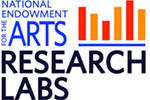
Meet our Team
